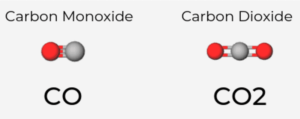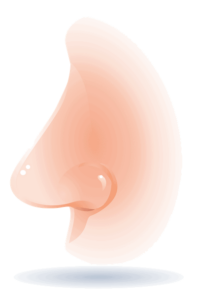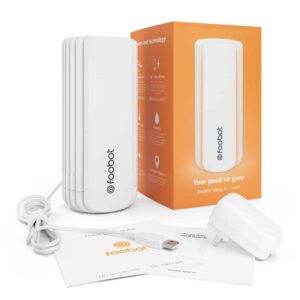Comparing Carbon Monoxide vs Carbon Dioxide in Indoor Air
The air inside of your home is often an under assessed component in your home that can collect and accumulate a mix of different chemicals, pollutants, and particles in the air that can all impact the overall indoor air quality within the environment. Overtime, as new things are added into an indoor environment it will lead to the development and entrance of many different pollutants in the air. Airborne pollutants that may be found in a home’s air could include pollutants such as allergens, VOCs, chemical odors, particulate matter, and even gases like carbon monoxide and carbon dioxide, which can be particularly hazardous when present in the air in elevated concentrations.
Carbon emissions that are released into the indoor air of your home can have a significant impact on both the indoor air quality of the environment and the health of those exposed to these emissions within their indoor airspace. It may be surprising to learn of the potentially elevated levels of these gases in your home, and even more surprising to locate the sources of these carbon emissions within your personal indoor environment.
In this article we are going to compare the differences between carbon monoxide vs carbon dioxide in indoor air, as well as learn the sources of carbon dioxide and how to detect and sensor carbon dioxide in your personal indoor environment.
Carbon Monoxide vs Carbon Dioxide
Carbon monoxide (CO) and carbon dioxide (CO2) are often two gases that are interchanged and often confused for one another when discussing these gaseous emissions in the air. These two gases have some significant similarities such as both are composed of carbon and oxygen atoms, as well as both of these gases are both colorless and odorless gases that can be extremely dangerous when present in the environment in elevated levels. Although there are many similarities between these two gases, there are also many differences that give these two carbon gases their distinct characteristics.

Carbon monoxide is a gas that is typically found in fumes produced while burning fuel in a car, truck, small engines, stoves, lanterns, grills, fireplaces, gas ranges, or furnaces. When this type of gas builds up inside of an indoor environment it can result in high elevations that can lead to poisoning of both occupants of the home and even their pets. The initial exposure to carbon monoxide in your home’s indoor air can result in a range of possible health effects, some severe and others acute. According to the Center for Disease Control and Prevention (CDC), “The most common symptoms of CO poisoning is a headache, dizziness, weakness, upset stomach, vomiting, chest pain, and confusion – symptoms that are commonly described as ‘flu like’”.
What is Carbon Dioxide
Carbon dioxide is a chemical compound that is composed of one carbon atom and two oxygen atoms and goes by the formula CO2. This greenhouse gas is a natural gas that is harmless in small quantities, but quite dangerous when present in the air at larger quantities. Carbon dioxide is among one of the most important gases on the earth because plants use it to produce carbohydrates using the photosynthesis process. This gas, although it has many benefits, can also have significant negative effects on the environment and to human health.
The introduction of carbon dioxide into your indoor environment is driven by a combination of carbon dioxide from outdoors, indoor breathing, and the ventilation levels in your home that will allow for these gaseous emissions to be pushed out of the home. It is common that CO2 levels may be elevated in buildings that house a lot of people and/or animals within this environment. According to the Wisconsin Department of Health Services, higher levels of carbon dioxide can displace oxygen and nitrogen which will potentially cause health problems.
What is Carbon Dioxide Made Of
 This carbon gas is exhaled by animals and humans and used by plants to produce oxygen. This chemical compound consists of two oxygen atoms and one carbon atom that will turn into a gas during room temperature. This gas is a colorless and odorless emission that can be hard to detect when present in the air of your indoor environment. There are many different factors that can impact the levels of carbon dioxide in the air of your home or other indoor environments. The main factors in a home that can influence the concentrations of carbon dioxide can include ventilation, the amount of people in the home, and the length of time in an enclosed space.
This carbon gas is exhaled by animals and humans and used by plants to produce oxygen. This chemical compound consists of two oxygen atoms and one carbon atom that will turn into a gas during room temperature. This gas is a colorless and odorless emission that can be hard to detect when present in the air of your indoor environment. There are many different factors that can impact the levels of carbon dioxide in the air of your home or other indoor environments. The main factors in a home that can influence the concentrations of carbon dioxide can include ventilation, the amount of people in the home, and the length of time in an enclosed space.
Sources of Carbon Dioxide in a Home
When we breathe in carbon dioxide, often times we are unaware that this inhalation has even occurred, this is because of the colorless, odorless nature of this gas. The sources of carbon dioxide in a home can range depending on the home and the conditions in each of these indoor environments. When talking about the different sources of carbon dioxide found in a home, this gas can come from the following household items;
- Limitation of Fresh Air: Carbon dioxide has the potential to build up and accumulate within the indoor air of your home, whether that be from the emission of this gas from soil under the home or from a variety of activities that the occupants of the home conduct. The indoor air levels of this gas tend to be higher when air restrictions are present in the home, and ventilation is limited. This will block the entrance and exit of the air from the home to be replaced by fresh, outdoor air.
- Soil: An unlikely source of carbon dioxide is soil under the house that contains this gas that is produced from decaying plants and animals. Higher levels of carbon dioxide may enter the home that is drawn out from the soil under the home, this is because of the differing air pressure of the home and the soil which will be sucked up by the home’s indoor air.
- HVAC System: When your home’s air handling system or HVAC system is improperly running inside the indoor environment it can potentially lead to higher levels of carbon dioxide in the air space. The recirculation of air occurs through the use of an air handling system that will constantly push the air throughout the airspace. If there are higher concentrations of carbon dioxide in the air, occupants will begin to experience different health symptoms that can indicate the present of this pollutant.
- Appliances: It may be surprising to learn that certain appliances in the home can be the source of carbon dioxide emissions. Heaters, dryers, stoves, and other unvented gas appliances will emit carbon dioxide into the air of the home and therefore the appliances in your home should be checked for this emission.
What Does Carbon Dioxide Smell Like
 Identifying carbon dioxide in the air of your home can be a difficult task – as it is difficult to recognize based on a specific odor or vapor in the air (as carbon dioxide is odorless and colorless). Although it has been found that when carbon dioxide is in the air it may have a smell similar to a mild, acidic flavor that can be noticeable after inhalation. Additionally, another key sign of CO2 in your indoor air will be a bout of health symptoms that the occupants may begin to experience after spending long durations of time around. These symptoms can range based on a wide variety of factors inside the environment.
Identifying carbon dioxide in the air of your home can be a difficult task – as it is difficult to recognize based on a specific odor or vapor in the air (as carbon dioxide is odorless and colorless). Although it has been found that when carbon dioxide is in the air it may have a smell similar to a mild, acidic flavor that can be noticeable after inhalation. Additionally, another key sign of CO2 in your indoor air will be a bout of health symptoms that the occupants may begin to experience after spending long durations of time around. These symptoms can range based on a wide variety of factors inside the environment.
Carbon Dioxide Symptoms in House
As exposure occurs when higher levels of carbon dioxide are in the air, it has the potential to result in a range of specific health issues. The health effects that are elicited from carbon dioxide levels in the home can depend on the actual level of carbon dioxide in the air, the airflow and ventilation in the environment, and the current health standing of those occupants exposed to the CO2. Carbon dioxide can enter into the body through multiple routes including inhalation, skin contact, and eye contact.
According to the Canadian Centre for Occupational Health and Safety the symptoms from exposure to CO2 can include the following;
- Inhalation: When lower concentrations of CO2 are in the air it is not considered harmful, but higher concentrations can be to human health. Symptoms can include rapid breathing, rapid heart rate, clumsiness, emotional upsets and fatigue, nausea, vomiting, and dizziness.
- Skin Contact: Mild symptoms such as numbness, prickling, and itching.
- Eye Contact: Can result in mild irritation or range in severity to eye damage or even blindness in some cases.
How Much Carbon Dioxide is in the Air
Carbon dioxide levels can vary in each environment, with different levels safe and others registered in the unsafe levels to human health. Typically, fresh air contains an estimated 400ppm (parts per million) of carbon dioxide. When measuring the levels of CO2 in your home’s indoor air, an acceptable range would be up to 1000ppm and is recommended not to rise past this level or else it will negatively impact the indoor air and human health. And any carbon dioxide levels above 2000ppm is considered extremely hazardous and should be avoided at all costs to avoid serious health risks like difficulty breathing, increased heart rate, and sweating.
The best way to track the ppm levels of carbon dioxide in your home is through the use of a specific carbon dioxide sensor and detector that you can place in this indoor space.
Carbon Dioxide Sensor & Detector
 The measuring and detection of pollutants in the indoor air including carbon monoxide and carbon dioxide can be analyzed using an efficient air quality meter, sensor, or detector. Among the different options when it comes to these air quality measuring devices, the Foobot, Smart Indoor Air Quality Monitor is a top-of-the-line device for measuring the air quality levels in your home. The Foobot is the first connected indoor air quality monitor that is designed to keep track of the air surrounding you in your home. The indoor air monitor can measure the temperature, humidity, carbon dioxide, toxic chemicals (VOCs), and harmful particulates (PM2.5). The Foobot’s LEDs provide you with a quick snapshot of your current air quality all through the use of a smartphone app that gives detailed records of indoor air quality levels overtime.
The measuring and detection of pollutants in the indoor air including carbon monoxide and carbon dioxide can be analyzed using an efficient air quality meter, sensor, or detector. Among the different options when it comes to these air quality measuring devices, the Foobot, Smart Indoor Air Quality Monitor is a top-of-the-line device for measuring the air quality levels in your home. The Foobot is the first connected indoor air quality monitor that is designed to keep track of the air surrounding you in your home. The indoor air monitor can measure the temperature, humidity, carbon dioxide, toxic chemicals (VOCs), and harmful particulates (PM2.5). The Foobot’s LEDs provide you with a quick snapshot of your current air quality all through the use of a smartphone app that gives detailed records of indoor air quality levels overtime.
Additionally, the Foobot carbon dioxide sensor offers the following benefits:
- Classy LED lights on the device give you instant air quality reading.
- Tracks harmful pollutants in real-time AND over time: VOCs, PM2.5, and also CO2 (derived from VOC), Temperature, Humidity
- Smart Home automation: Foobot can trigger other smart devices (lights, ventilation, air purifier) when pollutants rise
- Works with Nest, Ecobee, Lux, Honeywell connected thermostats, and more with IFTTT
- Can now be voice-controlled by Amazon Echo
- Tracks outdoor pollution too
- One of the rare home air quality meter showing all your data over time, since day 1
- Multi-room monitoring
- Actionable tips to improve your indoor air quality
- Free apps for iOS (8 or later) and Android (4 or later) – Compatible with WiFi 2.4GHz
Article Sources:

Foobot, Smart Indoor Air Quality Monitor

✓ Indoor air quality monitor to track pollutants in personal indoor environments like homes, offices, etc.
✓ Easily tracked using a smartphone app that tracks pollutant levels overtime
✓ Measures the temperature, humidity, carbon dioxide, toxic chemicals (VOCs), and harmful particulates (PM2.5)
✓ Easy installation and quick result snapshots
Comments
Post a Comment